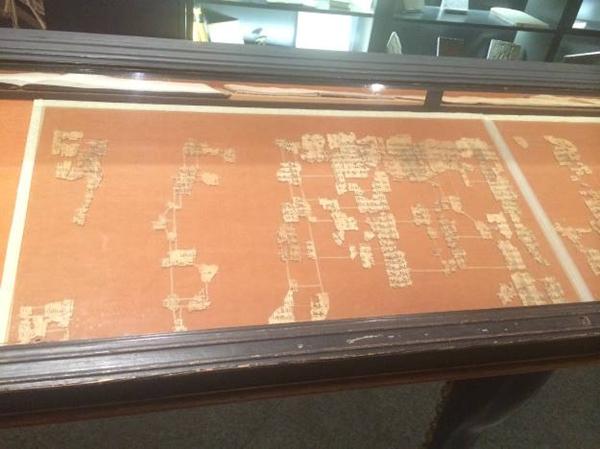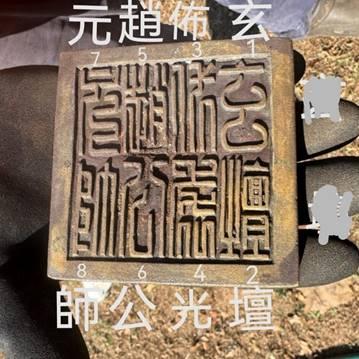Written by: Dr. Sam Osmanagich
Turin, Italy, Maj 2017.
The most valuable document of the ancient Egypt isn’t in the attractive National Museum in Cairo. It isn’t in the luxury museums in London, Paris, St. Petersburg or Chicago, which hold the rich collections of artifacts from the Pharaoh’s Egypt.
The biggest collection of the four-millennium Egyptian culture is in Turin. The most valuable individual document is the “Turin King list” or the “Turin Royal Canon”. This is the damaged papyrus which shows all Egyptian rulers.
Only Cairo and Turin has large museums entirely dedicated to the Egyptian era. For the biggest collection in Turin we can thank diplomat and collector Bernardino Drovetti (1776-1852) which was appointed by Napoleon as the French Vice Consul in Egypt in 1802 and as General Counsel in 1821. Drovetti worked for years on forming the collection in Egypt during 1820’s for the auction display for the potential European buyers. The largest collection was bought by the French government in 1823 and the collection was located in Turin, a part of France at the time. With the following purchases of the precious artifacts from Egypt, Turin became the Mecca for the Egyptian culture remains placed in the impressive Jesuit architectonic complex in the centre of the city where it is today.
During my last two visits to the Egyptian Museum in Turin, twenty and twelve years ago, the accent was to visit the biggest collection of the mummies in the World. However, the May 2017 visit was dedicated to the Turin King List.
Drovetti obtained this papyrus, 1.7 meters long and 0.41 meters wide, in 1818 in Luxor (most probably from the tomb), and he sent it to Turin in 1820. During the travel, the papyrus was damaged and unfortunately, 50% of the text has been destroyed.
The Chronology of the Egyptian Rulers intrigues the researchers around the world. There are several historic documents which are the base of the disposition as it is. Among them, nine documents stand out:
– “Den’s Stamp” (First Dynasty Pharaoh, which lists all First Dynasty Pharaohs from Narmer to himself)
– “Palermo Stone”, of the Fifth Dynasty, which lists former Pharaohs of five dynasties, but the stone is broken, so the list is incomplete
– “The King’s List from Giza”, made during the Sixth Dynasty, selective
– “The King’s List from Karnak:, (XVIII dynasty), very selective
– “The King’s List from Abidos”, (XIX dynasty), with the Pharaohs from the First interm priod missing
– “The King’s List from Sakara”:, (First Dynasty Pharaohs missing)
– “Manetho List:, (Greek era), the original was lost, the translation has imprecise anexes
However, all these lists are regarded as the extra in relation to the most comprehensive and systematically formed, the “Turin King List” from the time of the Pharaohs Ramses II (XIX Dynasty), which was the thirteenth century BC. Only the list in Turin has the names of the Pharaohs and years (very often months and days) of the Rule. The other lists can be used for comparison and examination. For example, certain lists didn’t include the foreign (hated) rulers (Nubian, Lybian, Mesopotamian), some didn’t include the rulers of a different religion or similar. From this perspective, the Turin List is objective and neutral. It’s believed that when it was whole it contained 300 names of the Rulers.
Unfortunately, the beginning and the end of the list are lost, and some names are severely damaged. The papyrus is divided into eleven columns. In the first column are the gods of ancient Egypt. In the second column are the demi-gods and mythical kings of the ancient Egypt. In the third column are the sons of gods (First and Second Dynasty). In the fourth and all columns which follow are the sons of gods (from Second to Fifth Dynasty), i.e. the mortal rulers.
And now we arrive at the reason of my interest for this document.
The Pharaoh’s lists are made so the rulers could show (and prove) that they are direct descendants of the gods (starting with a small “g”) and that their relations go all the way to the Horus. Therefore, sons of gods or the Pharaohs are the reincarnation of Horus on the Earth, and after the death, they would identify with the Osiris. This list takes us in the time when the gods ruled in Egypt, which came “from the sky”.
At the very end of the list, in the last two rows, as the resume of the entire document it says:
“Respected Shemsu-Hor – 13.420 year. The Rule before Shemsu-Hor – 23.200 year. In total 36.320 years.”
Although the major part of the first and second column is missing, it’s obvious that there was the record about the first rulers of the Egyptian land, which ruled significantly longer than the human mortals. We can make the parallel with the Sumerian Kings List. At the time more than 30.000 years ago, the Sumerian Kings ruled for thousand years in average. This was the case in Egypt, doubtlessly.
Of course, Egypt back then had a different look. Instead of the desert, we have today, the North Africa was green with the fertile soil and pleasant climate. That is a reason good enough for the gods to choose Egypt for their residence.
The critics made by certain historians that the time of the “gods” should be ignored and that the time of the Egyptian rulers should be counted only from Pharaoh-first mortal, the son of a god, Pharaoh Menes, aren’t objective and scientific. If we agree with all mortal rulers, why should we cast away the immortal ones? Why should there be this kind of the selectivity in the science? To adopt what suits us and fits with our vision of the world, and ignore everything that is different from our conviction?
The Turin Kings List clearly shows that there were nine dynasties which suit the pre-dynastic period of the Pharaohs. Among them are the “Memphis Rulers”, “The Rulers from the North”, and finally Shemsu-Hor (Horus followers) which ruled Egypt till the appearance of Manetho, the first mortal Pharaoh from Egypt.
According to the Roman historian Eusebius of Caesarea, the god’s dynasty ruled Egypt for 13.900 years. The first god was Vulcan (he gave the fire to the humans), then Sosis, Isis and Osiris, and then the Osiris’s brother Typhoon and on the end Horus, the son of Isis and Osiris.
After them came the demi-gods which ruled from the year 11025. In total it is 24.925 years. Around 3000 years BC the first human Pharaohs started ruling Egypt.
The most important Egyptian priest and historian were Manetho (III century BC) during the rule of Ptolemy the First and Ptolemy the Second. In his famous text, the “History of Egypt” (“Aegyptiaca”), Manetho also talks about the era of the gods and demi-gods. He established four dynasties before Menes, two dynasties of the gods, one of the demi-gods, and one transiting dynasty.
First, two dynasties consisted of seven key gods: Ptah, Ra, Shu, Geb, Osiris, Set and Horus and they ruled Egypt in the period of 12.300 years. After they come to the third dynasty led by Toth which contained 12 “divine Pharaohs”. They’ve ruled the Land more than 1.500 years. They were exchanged by 30 demi-gods in the fourth dynasty, often mentioned as the Horus followers. Their symbol was the eagle and they ruled for 6.000 years.
After the rule of this unearthly beings, in Egypt starts the chaos. Finally, the Pharaoh Menes introduces the order and unites the ancient Egypt countries.
On the Turin papyrus in the first column are the gods of the ancient land of the River Nile. In the second column, from the first to tenth row are the demi-gods, or as some people call the “the ghosts” and “mythical kings”. On this part of the papyrus, I observed the most. These two columns are the most damaged ones. Two years ago, the Museum released a news that the damaged parts of the papyrus are found and that the identification is in progress. Let’s hope we will receive new confirmations in the most ancient period.
I’m trying to catch up with this lost era for a moment. I close my eyes.
MEDITATION
A lower priest wrote, according to the instructions by the supreme priest, on this papyrus. They’ve used other documents as the base. The gods have existed. It was a different era, with the aircraft. The gods ruled humans.
***
The Museum visitors bring me back to the reality. May 2017. Because of the numerous artefacts, several levels of the Museum, just a few persons dedicate the time for the “Turin King List”.
The lists which are attracting the modern and independent researchers will change indefinitely the Egyptian dogma.
















